Distinguishing Real Pearls from Fakes: A Simple Guide

Need some quick tips on how to detect a fake pearl from a real one?
Read about these and more here.
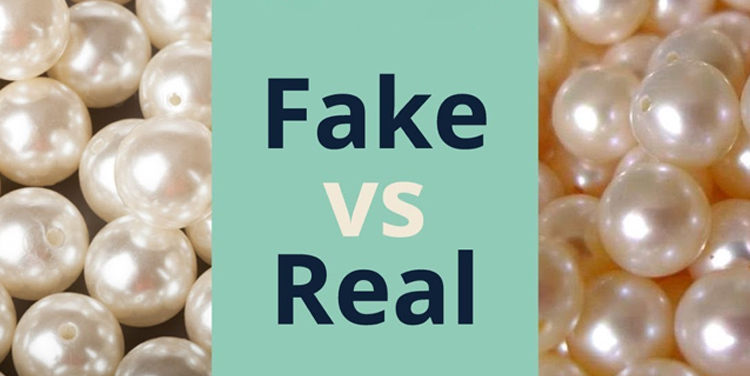
Summary
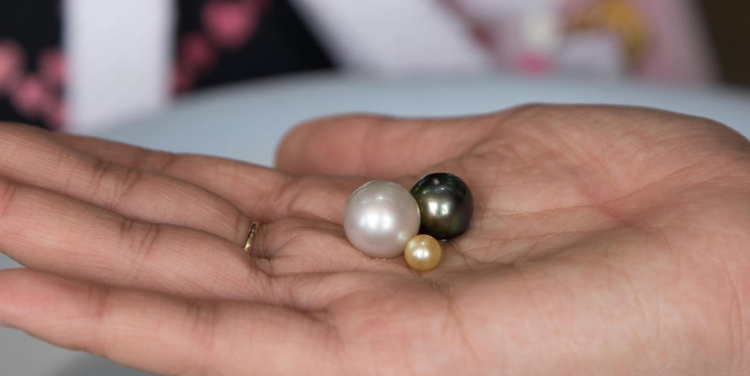
Have you always wanted to know how to detect fake pearl jewelry?
Then this is what you need.
In this article, you will read about the characteristics of real pearls and how they differ from fake ones or imitations.
To round it up, you will learn how to spot fake pearls because there are a lot out there.
By following some of these tests and paying good attention to them, your jewelry shopping game is about to get lit.
Introduction
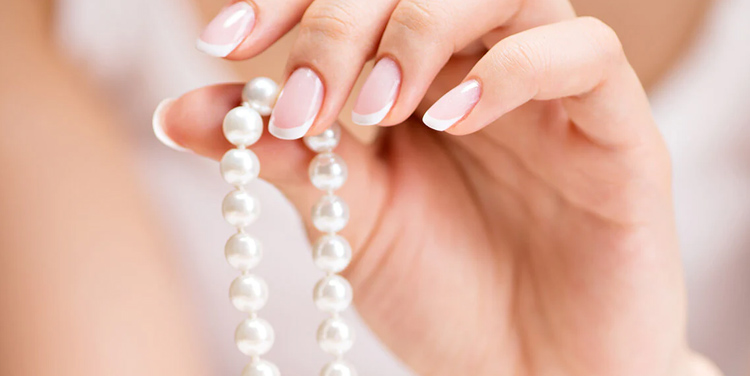
For every beautiful thing, there will be a duplicate, extremely similar in shape, size, and other characteristics but lesser in value and appearance.
Pearls, since their discovery, have continuously remained a model of beauty, elegance, and class suitable for any dress style.
Unfortunately, if you are not careful, you may end up getting the fake ones at an expensive price produced through the use of machines.
Many fall into this because of general misconceptions like the real pearls are perfectly round, have to be expensive, must be white, and lots more.
That’s a lie that you shouldn’t fall for.
Pearls are available in different shapes and sizes, depending on their type, and some even take a shapeless form.
The good part here is that you can always tell them apart, and this saves you a lot of stress and regrets, too.
So, how do you differentiate between fake and real pearls? Let’s get started.
Characteristics of Real Pearls
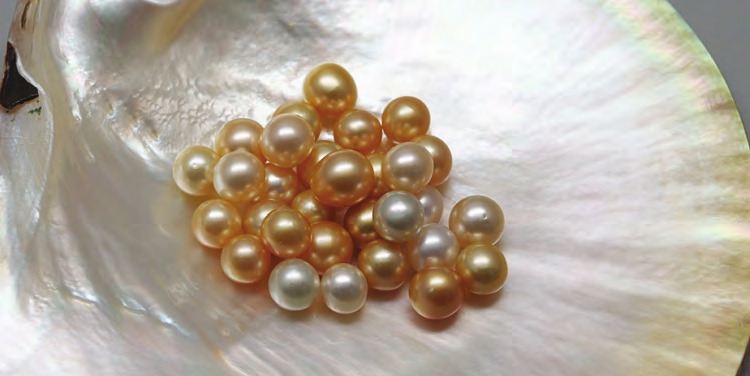
★Nacre Thickness

One unique quality of pearl that makes everyone love it is as a result of the nacre.
Do you know what this is? Well, you’ll learn about it shortly.
Pearls, when held, have this strong and resilient surface. That is the nacre.
During the process of pearl formation, an oyster wraps its inner shell layers, aragonite, and conchiolin around a foreign object.
Then produces different layers of nacre to give the pearl that smooth and strong finish.
The thickness of the pearl also contributes to the luster and beauty of the jewelry.
The nacre thickness of pearls is very important because it contributes to the durability and strength of your pearl jewelry.
Nacreous qualities are only found in real pearls, while fake pearls are simply coated.
Real pearls always feel cold and comfortable at room temperature, but the fake ones quickly get heated up as a result of the coating.
★Luster
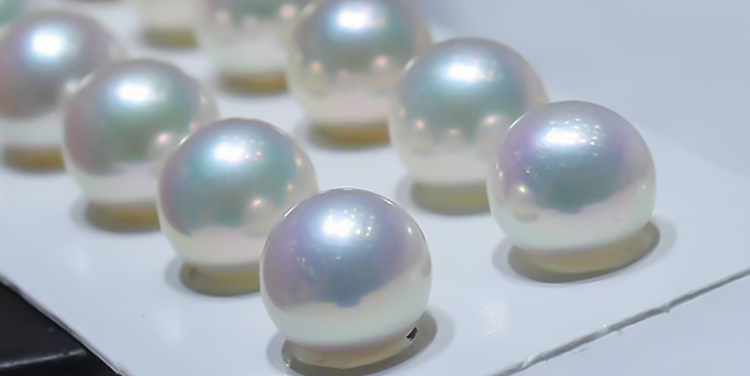
Another characteristic to determine a real pearl is the luster.
Pearls are not only beautiful, they also have this sharp brightness and rainbow-like reflection and even come better when there’s exposure to light.
The luster of the pearl is a result of its structure and composition.
It is also one of the easiest ways to tell a fake from an original pearl without stress.
To test if your pearl has the right luster, simply place it under light rays.
The reflection shouldn’t only show the brightness of the pearl, but other internal nacreous crystal layers.
★Surface Quality
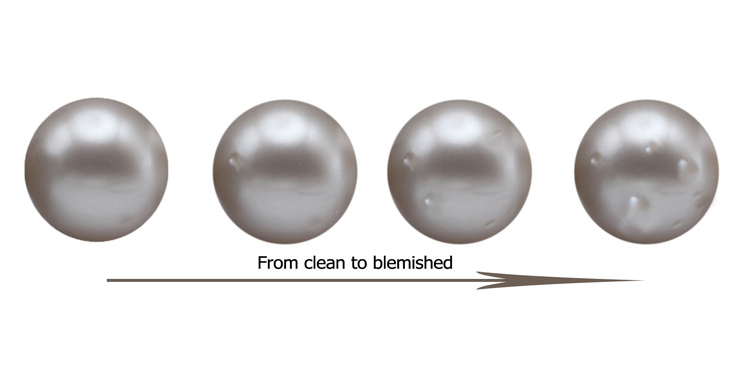
The surface quality is another way to tell if your pearl is original or fake.
The surface quality of pearls is very important because it informs you and seals your decision before proceeding to the point of payment.
Pearls, when slightly rubbed between fingers, have a gritty or stony feel, and this is one sign that your pearl is original.
Also, do away with the misconception that real p[earls do not have blemishes on the surface. This is not so.
Pearls may have blemishes ranging from easily visible ones to the tiniest of them all.
To examine the authenticity of the surface quality of a pearl, simply rub it between your fingers or against another pearl.
If the pearls are real, they should produce some friction due to the gritty surfaces of the stone; however, if the two stones slide off one another easily, then they are not what you are looking for.
★Weight and Temperature
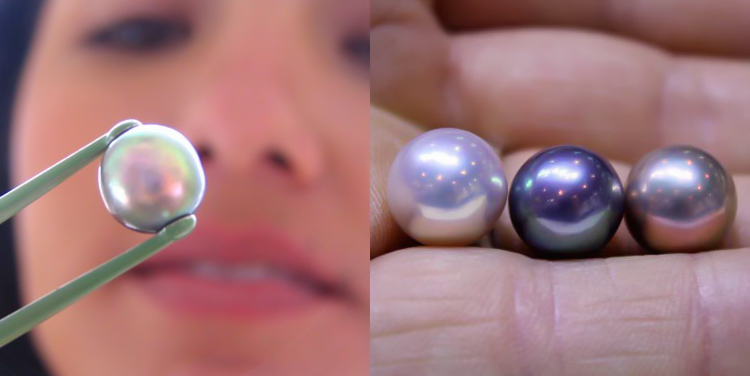
What about the weight and temperature of pearls?
These also can help determine if the pearls are real or fake.
Generally, pearls have a very cool temperature and remain like this for a few seconds, even after placing them on your hands.
After a few seconds, the pearl adjusts to room temperature.
However, fake ones always remain warm.
So, after picking up pearl jewelry, check to see if they are cold for the first few seconds.
Pearls are not heavy, nor are they extremely lightweight.
Instead, they fall in between the normal size, and if you are very familiar with buying pearls, then you should be able to tell original ones from synthetic types.
Fake pearls are either made from plastic, crystals, or glass.
In terms of weight determination, plastic pearls will be extremely lightweight and feel different from normal stones.
For the glass beads they are always heavy and give a feel of exaggerated weight.
Conducting Simple Tests
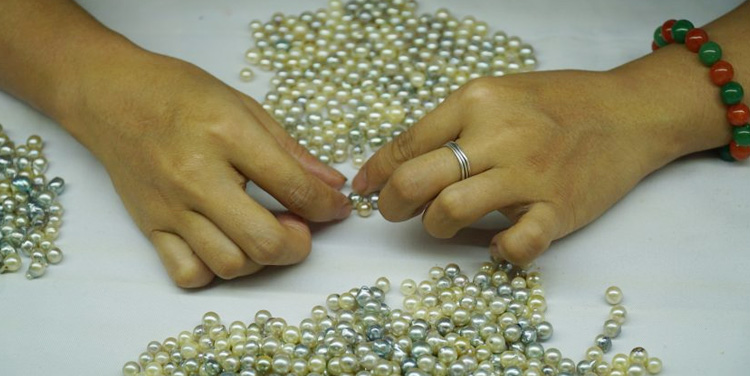
Aside from the general testing processes and features you have read about above, there are other ways to tell if your pearl is real or not.
These are quite simple and cost nothing to test. Let’s explore the various methods here quickly.
➔Tooth Test

At the point of shopping for pearl jewelry, a tooth test never fails to inform you whether or not the stones are real.
You need to know that this test requires some skill and extreme gentleness to avoid damaging the pearl.
To do the tooth test, place a pearl bead on the biting edge of your tooth and rub it along a few times.
The pearl, due to the nacre formation, would have a gritty feel in your mouth.
If the pearl is smooth all through, then it is likely an imitation.
➔Rubbing Test

The rubbing test is a good way to notice any imitation coatings on the surface of the pearl.
Aside from the tooth test, another way to test your pearl’s realness is by rubbing one against another.
With this gentle rub, you should be able to notice any peeling of coatings on the imitation.
If the pearl is original, the color is natural and may require more force to get damaged due to the nacre thickness.
Spotting Fake Pearls
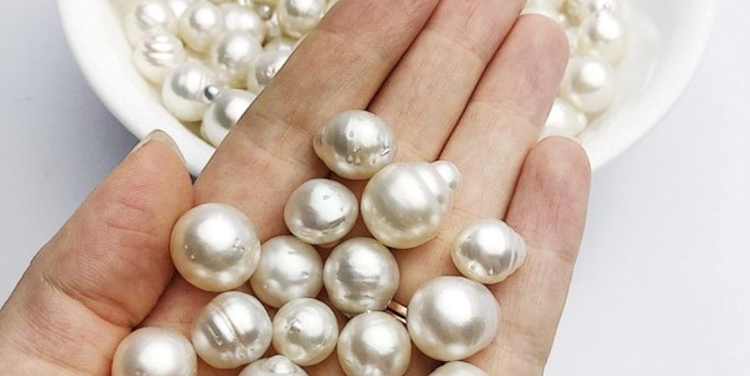
➔Plastic or Glass Appearance
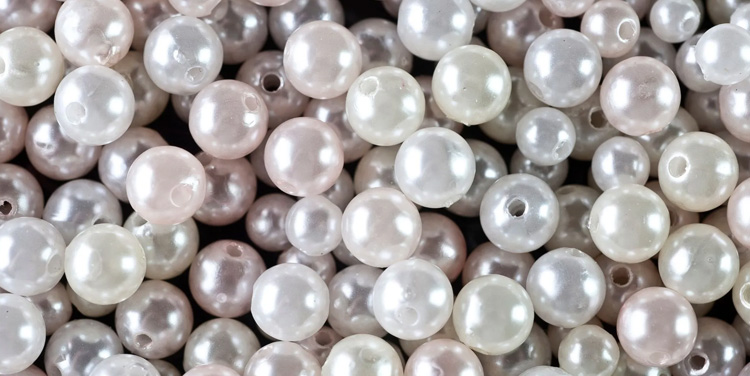
Fake pearls are not so easy to detect; however, with a bit of skill and attention to detail, you will be able to detect the fake pearl.
Pearls are beautiful and have a natural shine with bright reflection, which is very unique.
If the pearl has an unnatural shine on the surface, then it may be a glass imitation, and you should be very careful about buying it.
Also, when placed under light, there may be differences in reflection on the surface.
Original pearls have a natural reflection with a sharp brightness.
If your pearl reveals different rays of light reflections with no overtone, then it is an imitation.
➔Uniformity
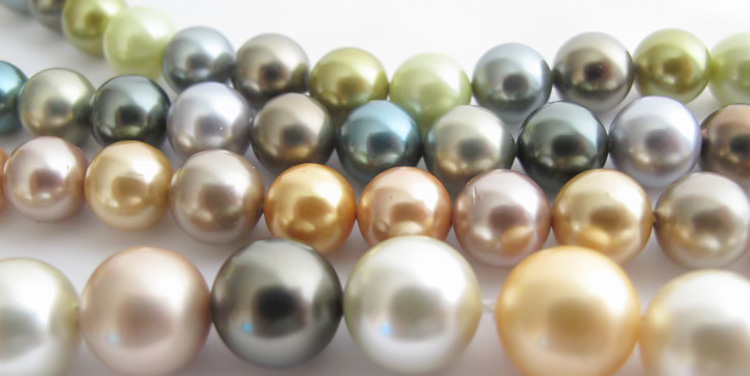
When you find a pearl bead that has all uniform shapes and sizes, then it is an imitation.
Remember that pearls are not man-made and are produced through a natural process.
Therefore, it cannot be all uniform.
There will be variances in sizes and shapes as well.
If otherwise, then a machine must have done the perfect job.
➔Drilling Holes
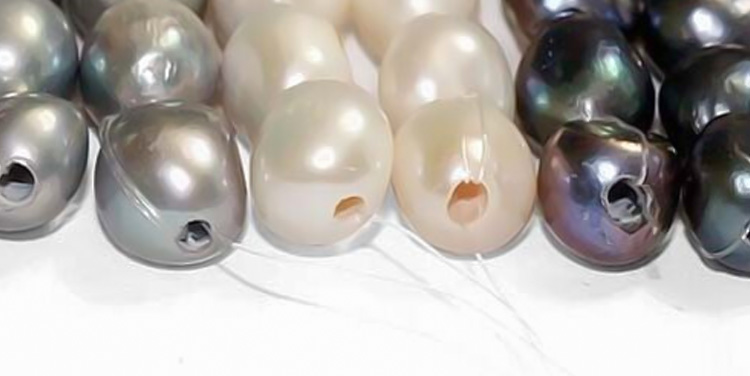
By checking the drill holes of the pearls as well, you can tell if they are real or not.
The drill holes of real pearls are smaller in size than the fake ones.
The imitation would usually have a larger drill hole and, if placed under a magnifying glass, have a thin, obvious coating that can easily peel off.
Fake pearls will not bounce.
When you drop real pearls, they bounce well up to a foot higher.
If this doesn’t happen, then it will be an imitation.
Distinguishing Real Pearls FAQs

Can real pearls be perfectly round?
Perfectly round pearls are extremely rare to find, and as such, they are very expensive as well.
So, when you find a perfectly round pearl all uniform in a bead, then you should test for imitations.
Do all real pearls have a high price tag?
No. Pearls can be less in price as well and are not all expensive.
You can always find pearl jewelry within your budget, depending on what you want.
Can fake pearls have a lustrous appearance?
Yes, but not like the originals.
That is why you have to check using the different tests in this article before making a purchase, especially when the prices are extremely high.
Are freshwater pearls always real?
No. There are lots of imitations out there including some classified as freshwater pearls.
So, be extremely careful out there.
Conclusion
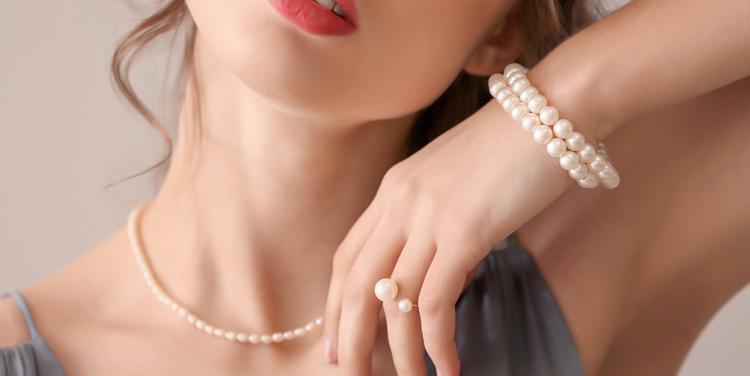
Not everything that glitters is gold; there are lots of imitations.
In this case, it's about pearls, and we have discussed in detail the various ways to detect and test for the authenticity of the stone.
The tooth test, rubbing test, checking for unnatural shine, and not generalizing that all real pearls are expensive are what you should keep in mind before buying your pearl.
Lastly, ensure you shop from a trusted brand online or offline with a money-back guarantee if you are unsatisfied or if any discrepancies are noticed.


1 Comment(s)
Hello,
Can you recommend a person or place where I can have my various pearls seen and appraised here in New York City?? (Manhattan) The oldest one out of eight that I have was my great grandmother's single strand of graduated pearls w/ 18kgold & mine diamond clasp. - Seed pearls, etc.. I have not been able to find a place to have them appraised, seen, verified as to class of pearl they are.
Thank you for your time.
Sincerely,
V. Laffitte
vmglaffitte30@yahoo.com
Leave a Comment